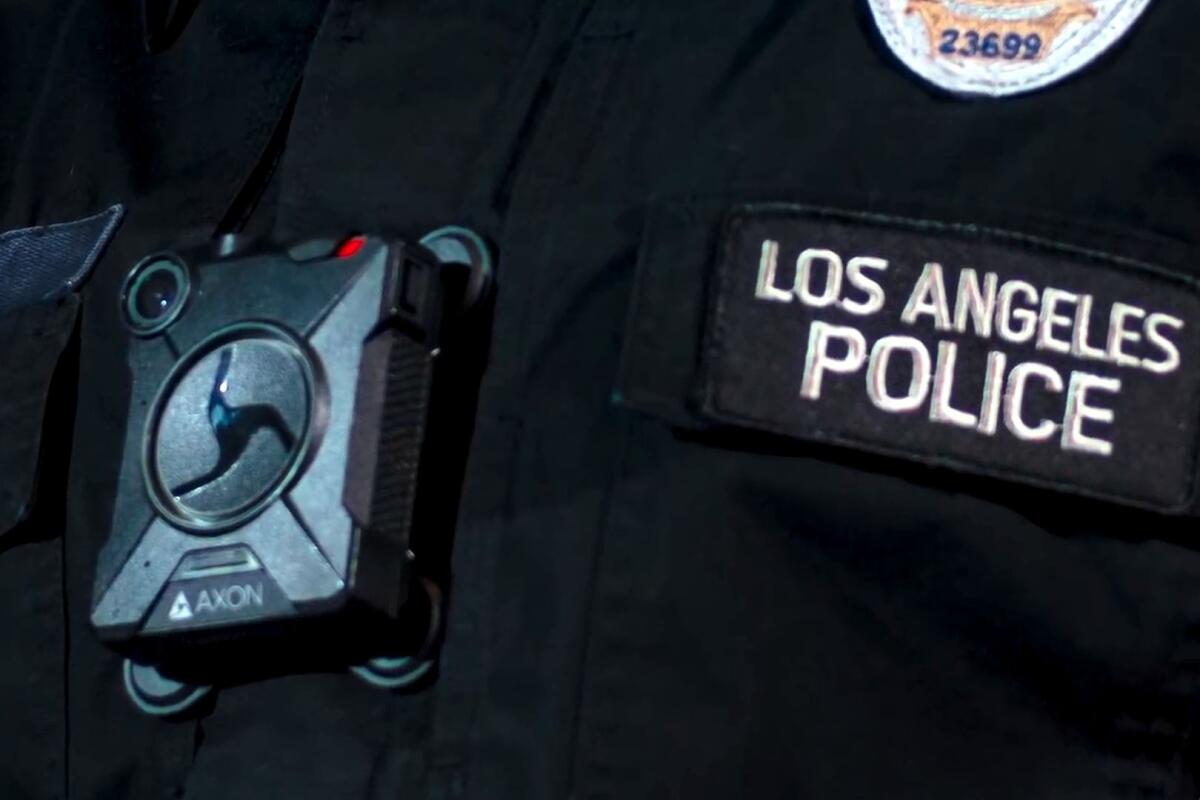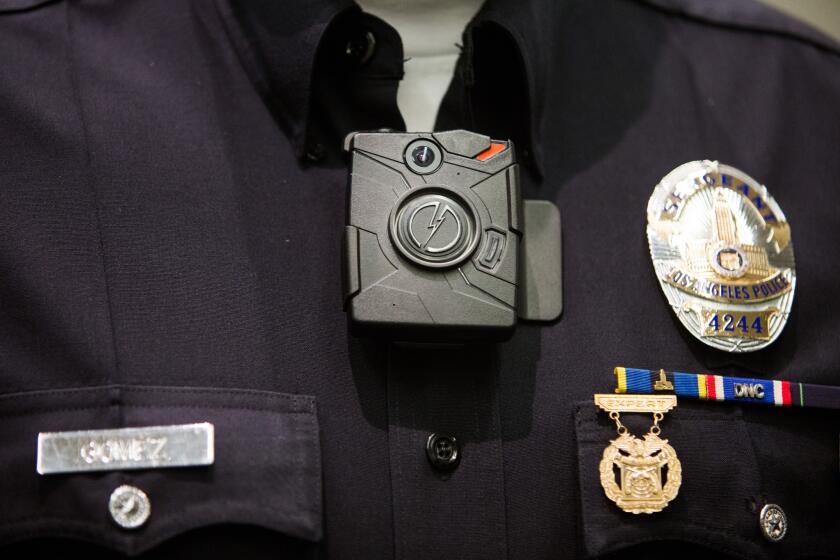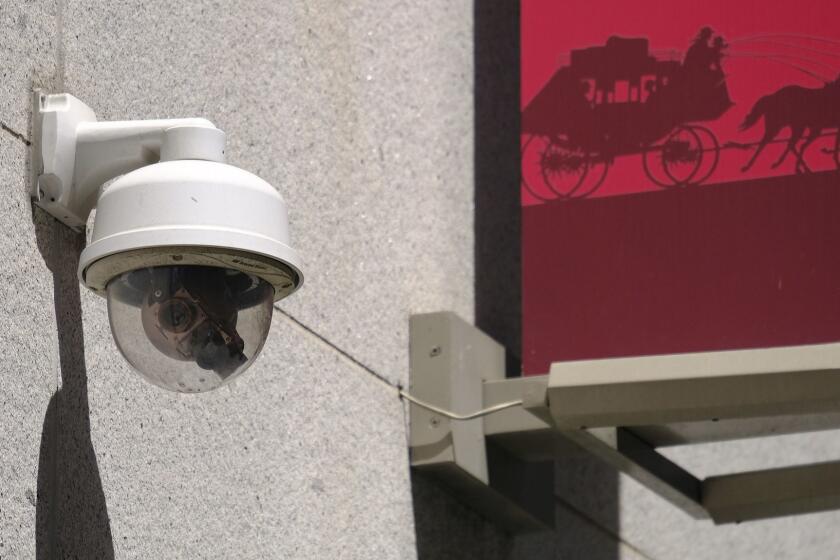Editorial: Police body cams shouldn’t be surveillance tools

Police body cameras and facial recognition technology serve two completely different purposes and shouldn’t be combined.
Body cams record officer interactions with the public and make police less likely to fib about what they did or why, because they know there will be a reviewable recording. Body camera use correlates with an immediate reduction in use-of-force incidents.
The cameras can have a similar effect on members of the public, because the recordings can verify or undermine any allegations they make against officers. They drive down the number of false or petty complaints.
The function of face-scanning biometric software is entirely different. It is used to identify people by running their features through databases to determine not just who they are, but also where they have been, and when.
California lawmakers should prevent police body camera images from being run through facial recognition software.
Pairing these two technologies turns each police officer into a surveillance and dossier-building tool, and completely undermines the trust-building promise of the cameras. It turns every member of the public into a suspect and every encounter with police into a virtual stop and frisk, logging who they are, where they have been and what they have done. It can be used to continuously spy on entire communities. It infringes on privacy — with little benefit to public safety, because facial recognition software is notoriously unreliable and spits out false-positive identifications, which police nevertheless use to track purported suspects.
Even the tech companies that make the software discourage or bar its use in police body cameras, on ethical grounds. Because officers are in constant motion, images captured are of low quality, increasing the likelihood of false identifications.
California lawmakers recognized the obvious dangers in 2019 when they adopted a three-year ban on using facial recognition software with body cam images. It was a smart move and was time-limited only because of pressure from police agencies that would very much like to turn each officer into a surveillance post.
Police are again applying pressure, now that the ban is set to expire and lawmakers put forward a bill to renew it and make it permanent.
The police appear to have won this round. State Senate Bill 1038, by Sen. Steven Bradford of Gardena, fell short in the state Senate last week, but lawmakers should try another route. The ban should remain in place and should become permanent.
SB 1038 applies only to police body cameras. Use of facial recognition continues in many other venues, although it remains extremely controversial. The Internal Revenue Service briefly required it for taxpayers logging on to its website (but relented this year under public criticism). This road leads to something out of a dystopian movie: You unwittingly add to your face-print dossier every time you enter a library or post office.
Advocates for this technology argue that it is simply another, but more reliable, version of long-standing identification methods, like signatures or Social Security numbers.
The LAPD has used facial recognition software nearly 30,000 times since 2009, with officers running suspect images against a mugshot database.
But there’s a huge difference. We don’t broadcast our signatures or other private data whenever we venture outside, and cameras don’t capture that information and match it to databases the way they do with face prints.
In other states, the use of facial recognition technology has resulted in multiple wrongful arrests and racial profiling. That’s especially true in the case of Black and Asian men, for whom the software appears to be particularly inexact, according to the National Institute of Standards and Technology.
SB 1038 does not apply to stationary police cameras, helicopter surveillance or private video collected by businesses or residences on their door cameras and shared with police. It applies only to police body cameras, which are meant to promote honesty and trust in personal interactions between police and the public. Facial recognition software has no proper place in that relationship. California should keep face prints and other biometric identification technology out of body cams permanently.
More to Read
A cure for the common opinion
Get thought-provoking perspectives with our weekly newsletter.
You may occasionally receive promotional content from the Los Angeles Times.












